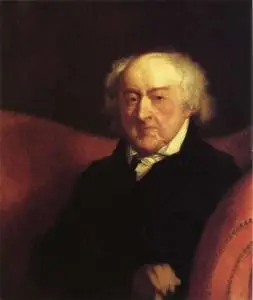
Many youth about this time, in the heart of winter, plan their spring and summer adventures. For some it will mean embarking upon the Pilgrimage to Santiago de Compostella — the Camino. For those of you who venture upon this ancient pilgrimage, trod by kings and saints, even St. Francis of Assisi himself, it may be a surprise to learn that the pilgrim road also played a role in America’s struggle for independence.
During the war of American Independence, John Adams was ordered by Congress to go to Paris to obtain funds for the cause. His ship started leaking and he disembarked with his two sons in Finisterre in 1779. From there he proceeded to follow the Way of St. James in the reverse direction of the pilgrims’ route, in order to get to Paris overland. He did not stop to visit Santiago, which he later came to regret. In his autobiography, Adams gave an accurate description of the customs and lodgings afforded to St. James’s pilgrims in the 18th century, as well as mentioned the legend as it was then told to travelers:
I have always regretted that We could not find time to make a Pilgrimage to Santiago de Compostella. We were informed, … that the Original of this Shrine and Temple of St. Iago was this. A certain Shepherd saw a bright Light there in the night. Afterwards it was revealed to an Archbishop that St. James was buried there.
No doubt, John Adams would have been struck by a kindred thought between the Spanish Catholic desire for freedom and his own country’s aspirations to be free of the yoke of England.
More : http://www.history.com/this-day-in-history/john-adams-prepares-to-sail-for-france
